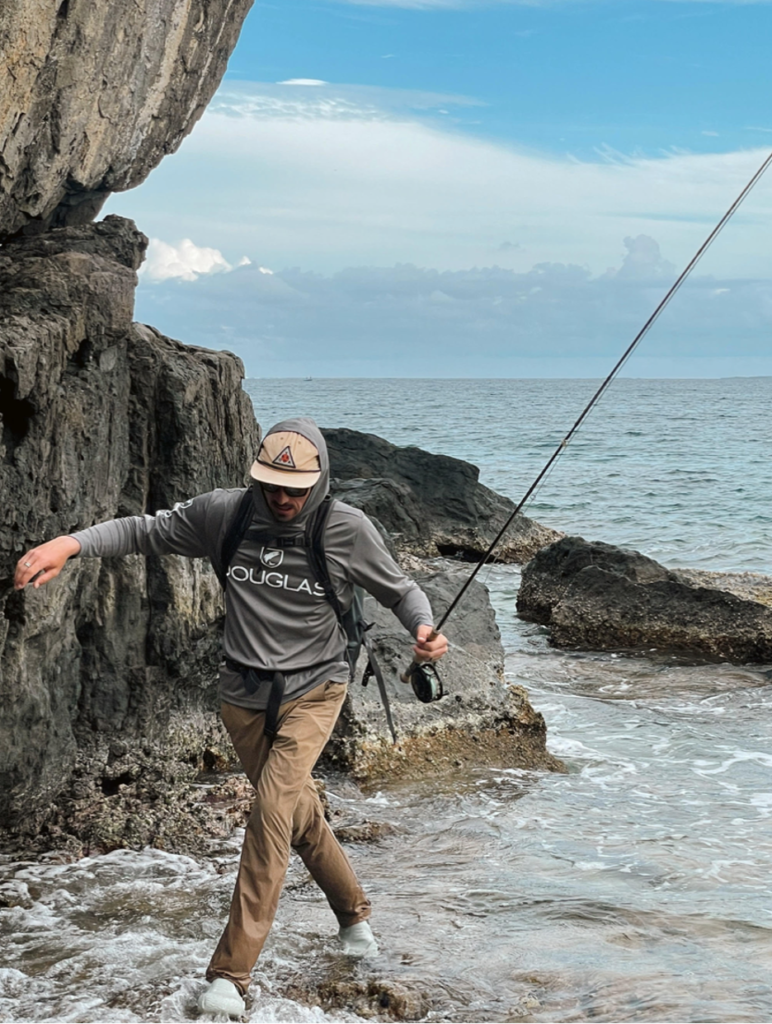Morgan Barbeau | @mopflyproductions, @morgan_is_fishing May 2024
If you do a quick Google search for info on flats fishing in Puerto Rico, you’ll be hard pressed to find much out there, and certainly nothing written more recently than 10 years ago. On top of that, what is written doesn’t give much hope that it’s worthwhile. You want to get to a flat? You’ll definitely need a boat. You want to find Permit? Good luck, they all got gill netted years ago. Bonefish? Slim chance you’ll see them and if you do, they’re extra spooky so just forget about it. Oh, and good luck casting into all that relentless wind they get there.
With all this discouraging press, it might be surprising that my husband, Tanner, and I still chose to spend 10 days split between San Juan and Culebra, hunting for the big three saltwater species on the fly: tarpon, bonefish, and permit. Tanner went to Culebra about 5 years ago with a friend when he was still very new to saltwater fly fishing, and while he didn’t realize what he was witnessing at the time, he spotted huge permit tailing in the surf. Although they didn’t have a ton of success on that trip, those happy tails have haunted him ever since. So when we started thinking about our next DIY adventure, we decided to give Puerto Rico another shot.
Gear List:
For bonefish and small jacks:
– Douglas Sky G 8wt
– 8 wt reel (Galvan Grip)
– Scientific Anglers Grand Slam for 8 wt
– Mantis shrimp, gotchas, crazy charlies, EP spawning shrimp
For permit:
– Two Douglas Sky G 9wts (backup just in case)
– 9wt reels (Galvan Torque 9wt, Abel Rove 7/9)
– Scientific Anglers Grand Slam for 9wt
– fleeing crabs, raghead crabs, merkin crabs, alphlexo crabs
For tarpon:
– Two Douglas Sky 10wts (backup just in case)
– 10wt reels (Allen Kraken 10wt)
– Scientific Anglers Full Intermediate line for 10wt
– Tarpon bunnies, EP mullet (black, black and red, black and purple), minnows
**Interestingly, in Puerto Rico, we were throwing very small streamers (like 2-3in long), as opposed to other places where you’re throwing much larger streamers at them.
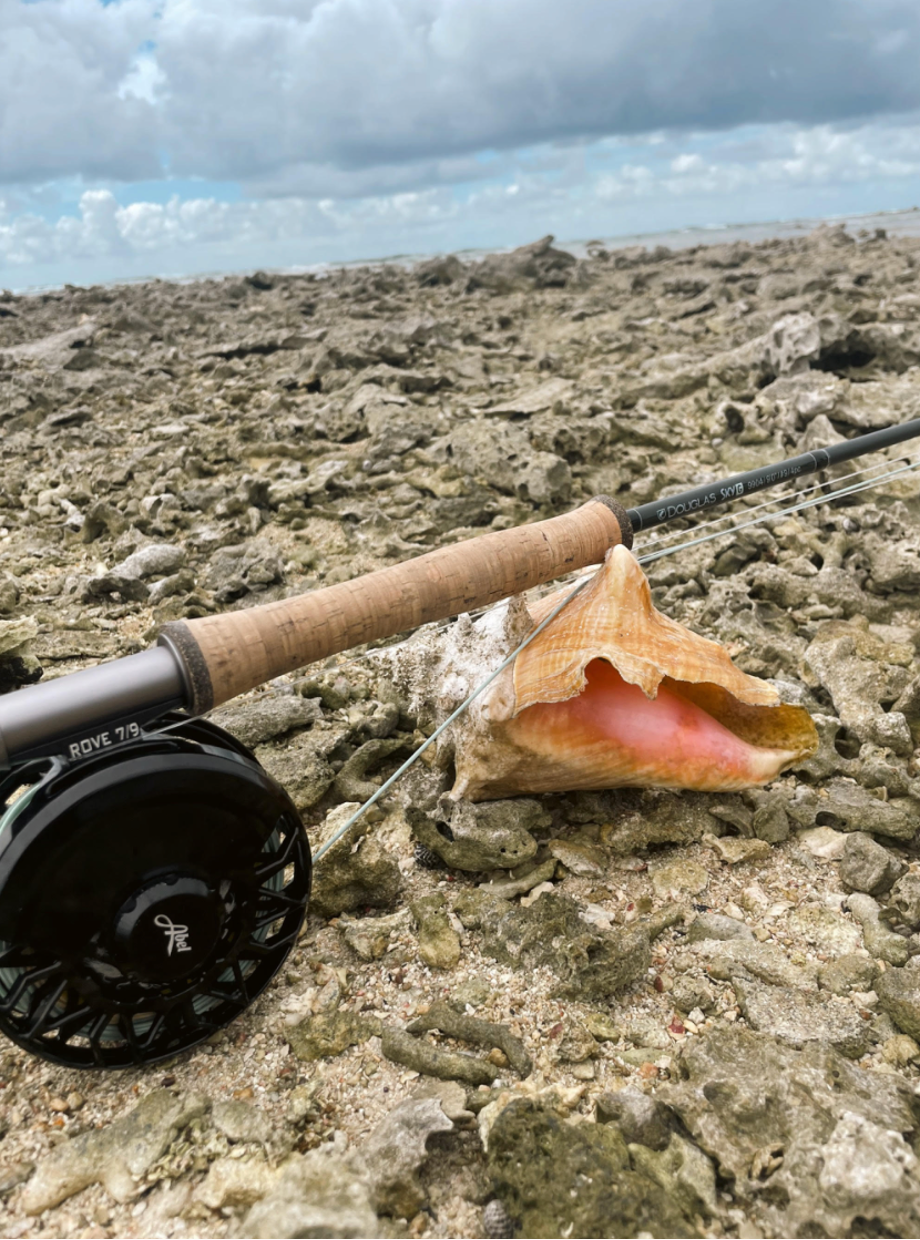
We spent our first day fishing in San Juan, the capital city of Puerto Rico. San Juan actually has a very well established tarpon fishery in a giant brackish lagoon, right in the middle of the city. It’s full of resident, as well as some migratory tarpon, ranging from small juveniles to fully mature, 100+lb silver kings. Since there’s a lot of private property and thick mangroves around the lagoon that are impassable by foot, we went out for a half day with Capt. Carlos from Puerto Rico Magic Tarpon.
The Douglas Sky G 10wt was the perfect rod for this excursion. When we motored into the lagoon around 6am, there were massive tarpon rolling in every direction, as well as birds going wild over the bait being pushed up for an easy meal. In my past experience tarpon fishing, I’ve only gotten a couple shots at a time, but here, we were casting nonstop at these feeding giants, so having such a lightweight rod saved my arm from burning out during this 4-hour casting marathon. The Sky G loads perfectly with minimal effort, and its fast action allows for incredible line speed and accuracy.
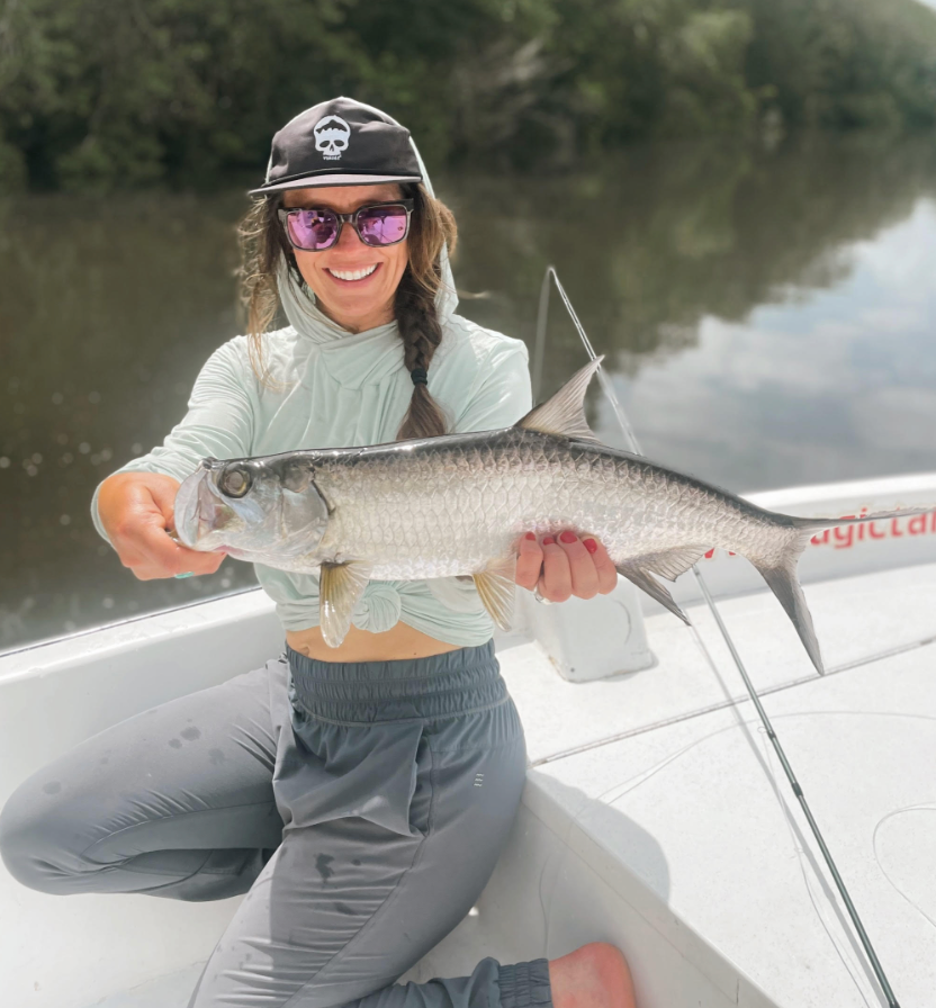
I eventually hooked into a ~30lb tarpon, which put on quite an aerial show, the signature tarpon fight. I put the Sky G through the wringer with this fish. At one point, it was entirely bent in half applying opposite pressure on the fish, and at another point, the top half of the rod completely popped off when an undetected knot bunched up my line and pulled through the guides as the tarpon ran. Although he eventually jumped off and got away, the rod was unscathed and good as new after the whole chaotic ordeal.
The next day, we traveled to Culebra, where we spent the remainder of our trip. Culebra is a tiny island just east of the main island of Puerto Rico, accessible by puddle jumper plane or a short ferry ride. It’s got a sleepy little fishing village vibe to it, you can drive across the entire island in less than 20 minutes, and it’s surrounded by pristine flats. Here, we planned to try our hand at finding bonefish, permit, more tarpon, and really any other species we could target. We rigged up a Douglas Sky G 8wt for bonefish, and Sky G 9wt for permit, in addition to the 10wt for more tarpon action.
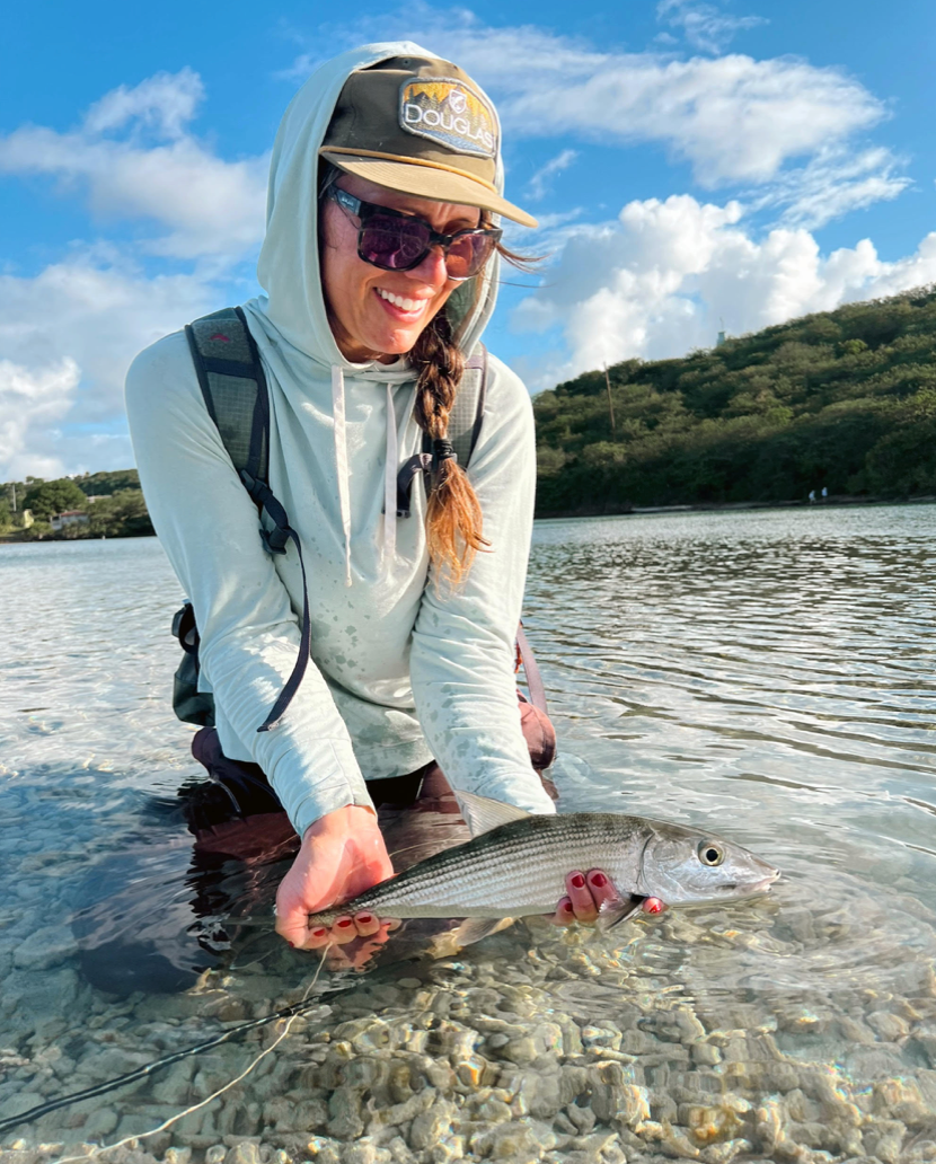
Now, I know this is a DIY flats fishing article, and we will get to that part, but to set ourselves up for success, we did opt to get a guide for the first two days in Culebra. This is a good idea when visiting a new fishery for several reasons.
First, by booking a guide, you’re supporting the local economy and fishery. We went out with the talented Capt. Antonio Flecha, who’s literally the only fly fishing guide on Culebra. Flecha has been tying flies since he was a child, finding inspiration from Jose Wejebe’s weekly show, the Spanish Fly, and he knows this fishery like the back of his hand. With Capt. Flecha, we had opportunities to fish for the big three in ways that you just don’t get to very often. At one point we used a sinking line and heavy shrimp patterns to catch bonefish that were feeding in 13ft of water. Then we got some fired up juvenile tarpon on topwater gurglers, and later even had a shot at a solo 25lb permit tailing in the surf. It was an awesome learning experience, and it was great to be out with someone who’s so passionate about fly fishing and taking care of their home fishery.
Second, even if you’re a seasoned saltwater angler, you’ll learn some invaluable insider tips and tricks that may be unique to the fishery, upping your chances of success when you go out on your own. We learned more about the tides, fish behavior, food sources, and flies to use on Culebra, that, as folks coming from a landlocked state, we just aren’t familiar with.
Lastly, going out on a skiff has its perks. You cover a lot more water, quickly find fish, you can maneuver the boat into a perfect casting position, and you can fish some deeper water. Being on a higher platform, you and your guide also have a better vantage point to spot fish. And beyond all that, who doesn’t love cruising around in a skiff? It’s just nice.
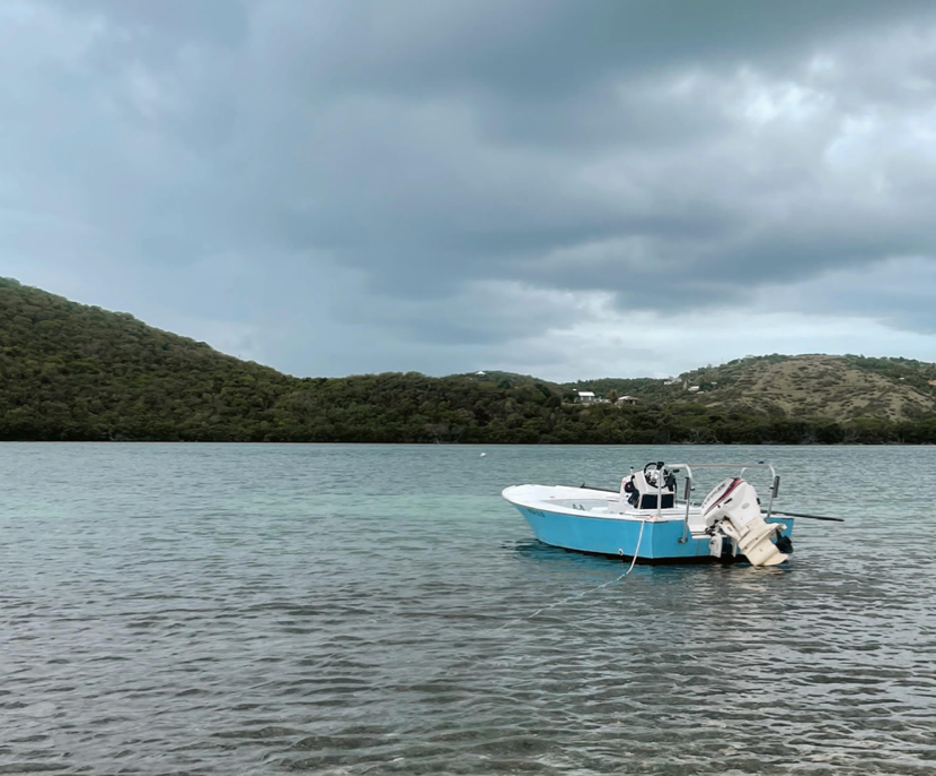
Before our trip, as he does with any fishing excursion, Tanner studied Culebra’s flats for countless hours on Google Earth. So when it came time to fish on our own, he’d already fully scoped out all the details of each flat we planned to check out, down to precisely where we’d park the car. We decided we’d focus on one flat each day. We still weren’t experts on the tides and how that impacts fish behavior, but the thinking was that if we’re at the same flat all day, we’d experience a whole tidal cycle, and hopefully the fish would show up for at least some part of that.
Maybe there’s a better strategy, but this seemed to work well for us. We would wake up at 5am each morning, chug a little coffee and eat a light breakfast, pack up some lunch, and be on the water by about 6. Some days the fish were already there and we’d immediately get shots, other days we wouldn’t see anything until the evening. But one thing I can say for sure, counter to all we read on the internet before the trip, is we found fish every single day.
Saltwater fly fishing is challenging because you’re more so hunting for these fish. This is very different from, say, nymphing for trout in a deep hole where you know the fish are always holding. Saltwater species are much more nomadic, roaming around looking for food and retreating back to deeper water at even the slightest notion of a threat. That means stealthiness, awareness, and most of all patience are critical for success.

Weather can also add a layer of complexity to this game. Calm, sunny days make it easy to spot fish in the water. Tails and nervous water (ripples fish make when they’re moving close to the surface) become very obvious. During our time on Culebra, we got some sun, but most of the time it was overcast and windy, so we really had to bank on seeing fish actively feeding with their tails out of the water to have any chance at catching one. I remember one afternoon I got so mad at myself because I was slowly walking the flat, scanning for fish, and ended up spooking a whole school of huge bonefish just 20 ft away from me. They’d been happily feeding, but between the clouds and wind and high tide, I couldn’t see them at all. When you get so few shots at fish each day, a mistake like that can leave you feeling absolutely defeated.
Despite the difficult conditions, we still managed quite a bit of success on our DIY adventures. We each caught a couple nice bonefish, had shots at some incredibly dodgy triggerfish, Tanner had more shots at massive permit, and we also got into barracuda, jacks, boxfish, and needlefish. Tanner even had a cuttlefish take his fly. While it sometimes felt like a grind, especially when the weather didn’t cooperate, sticking out the mission every day made success feel all the more special and rewarding. Being able to spot fish, position yourself just right, get the right cast off, and get the fish to eat is a feat in and of itself, so landing a fish DIY transcends into pure magic. It’s hard for me to think of another experience that tops this feeling, and it’s the drive to feel that magical high over and over that fuels our obsession with this sport.
In the realm of flats fishing, the internet narrative of scarce fish, howling winds, and general lack of information might dissuade anglers from paying a visit to Puerto Rico. Thankfully, our adventure unveiled a different reality for us. From the urban tarpon lagoons of San Juan to the untouched flats of Culebra, each day brought its own set of trials and triumphs. Through the expertise of local guides like Capt. Flecha, as well as our own research and DIY efforts, we not only found the fish we hoped to, but also reconnected with the reasons we do any of this at all: to connect with the fly fishing community, the natural world, and ourselves. In the end, Puerto Rico revealed itself as an oasis for anglers willing to leave behind expectations and just go explore. We’re so thankful for the opportunity to have gone on this trip, for the friends we made along the way, and to Douglas for supporting us with the equipment we needed for success.
